1 . Getting less sleep has become a bad habit for most American kids. According to a new survey(调查) by the National Sleep Foundation, 51% of kids aged 10 to 18 go to bed at 10 pm or later on school nights, even though they have to get up early. Last year the Foundation reported that nearly 60% of 7- to 12-year-olds said they felt tired during the day, and 15% said they had fallen asleep at school.
How much sleep you need depends a lot on your age. Babies need a lot of rest: most of them sleep about 18 hours a day! Adults need about eight hours. For most school-age children, ten hours is ideal(理想的). But the new National Sleep Foundation survey found that 35% of 10- to 12-year-olds get only seven or eight hours. And guess what almost half of the surveyed kids said they do before bedtime? Watch TV.
“More children are going to bed with TVs on, and there are more opportunities(机会) to stay awake, with more homework, the Internet and the phone,” says Dr. Mary Carskadon, a sleep researcher at Brown University Medical School. She says these activities at bedtime can get kids all excited and make it hard for them to calm down and sleep. Other experts say part of the problem is chemical. Changing levels of body chemicals called hormones not only make teenagers’ bodies develop adult characteristics, but also make it hard for teenagers to fall asleep before 11 pm.
Because sleepiness is such a problem for teenagers, some school districts have decided to start high school classes later than they used to. Three years ago, schools in Edina, Minnesota, changed the start time from 7:25 am to 8:30 am. Students, parents and teachers are pleased with the results.
1. What is the new National Sleep Foundation survey on?| A.American kids’ sleeping habits. | B.Teenagers’ sleep-related diseases. |
| C.Activities to prevent sleeplessness. | D.Learning problems and lack of sleep. |
| A.7 hours. | B.8 hours. |
| C.10 hours. | D.18 hours. |
| A.They are affected by certain body chemicals. |
| B.They tend to do things that excite them. |
| C.They follow their parents’ examples. |
| D.They don’t need to go to school early. |
2 . Benjamin West, the father of American painting, showed his talent for art when he was only six years of age. But he did not know about brushes before a visitor told him he needed one. In those days, a brush was made from camel’s hair. There were no camels nearby. Benjamin decided that cat hair would work instead. He cut some fur from the family cat to make a brush.
The brush did not last long. Soon Benjamin needed more fur. Before long, the cat began to look ragged(蓬乱). His father said that the cat must be sick. Benjamin was forced to admit what he had been doing.
The cat’s lot was about to improve. That year, one of Benjamin’s cousins, Mr. Pennington, came to visit. He was impressed with Benjamin’s drawings. When he went home, he sent Benjamin a box of paint and some brushes. He also sent six engravings(版画) by an artist. These were the first pictures and first real paint and brushes Benjamin had ever seen. In 1747, when Benjamin was nine years old, Mr. Pennington returned for another visit. He was amazed at what Benjamin had done with his gift. He asked Benjamin’s parents if he might take the boy to Philadelphia for a visit.
In the city, Mr. Pennington gave Benjamin materials for creating oil paintings. The boy began a landscape(风景) painting. William Williams, a well-known painter, came to see him work. Williams was impressed with Benjamin and gave him two classic books on painting to take home. The books were long and dull. Benjamin could read only a little, having been a poor student. But he later said,"Those two books were my companions by day, and under my pillow at night."While it is likely that he understood very little of the books, they were his introduction to classical paintings. The nine-year-old boy decided then that he would be an artist.
1. What is the text mainly about?| A.Benjamin’s visit to Philadelphia. |
| B.Williams’ influence on Benjamin. |
| C.The beginning of Benjamin’s life as an artist. |
| D.The friendship between Benjamin and Pennington. |
| A.The cat would be closely watched. |
| B.The cat would get some medical care. |
| C.Benjamin would leave his home shortly. |
| D.Benjamin would have real brushes soon. |
| A.He took him to see painting exhibitions. |
| B.He provided him with painting materials. |
| C.He sent him to a school in Philadelphia. |
| D.He taught him how to make engravings. |
| A.master the use of paints |
| B.appreciate landscape paintings |
| C.get to know other painters |
| D.make up his mind to be a painter |
My mother looked at the sitting room, its furniture disordered for a thorough sweeping. Again she cast a look toward the window. "Come on, girls! Let's take string to the boys and watch them fly the kites a minute."
On the way we met Mrs. Patrick, laughing guiltily as if she were doing something wrong, together with her girls.
There never was such a day for flying kites! We played all our fresh string into the boys' kites and they went up higher and higher. We could hardly distinguish the orange-colored spots of the kites. Now and then we slowly pulled one kite back, watching it dancing up and down in the wind, and finally bringing it down to earth, just for the joy of sending it up again.
Even our fathers dropped their tools and joined us. Our mothers took their turn, laughing like schoolgirls. I think we were all beside ourselves. Parents forgot their duty and their dignity; children forgot their everyday fights and little jealousies. "Perhaps it's like this in the kingdom of heaven," I thought confusedly.
It was growing dark before we all walked sleepily back to the house. I suppose we had some sort of supper. I suppose there must have been surface tidying-up, for the house on Sunday looked clean and orderly enough. The strange thing was, we didn't mention that day afterward. I felt a little embarrassed. Surely none of the others had been as excited as I. I locked the memory up in that deepest part of me where we keep "the things that cannot be and yet they are."
The years went on, then one day I was hurrying about my kitchen in a city apartment, trying to get some work out of the way while my three-year-old insistently cried her desire to "go park, see duck."
"I can't go!" I said. "I have this and this to do, and when I'm through I'll be too tired to walk that far."
My mother, who was visiting us, looked up from the peas she was shelling(去皮). "It's a wonderful day," she offered, "really warm, yet there's a fine breeze. Do you remember that day we flew kites?"
I stopped in my dash between stove and sink. The locked door flew open and with it a rush of memories. "Come on," I told my little girl. "You're right, it's too good a day to miss."
Another decade passed. We were in the aftermath (余波) of a great war. All evening we had been asking our returned soldier, the youngest Patrick Boy, about his experiences as a prisoner of war. He had talked freely, but now for a long time he had been silent. What was he thinking of — what dark and horrible things?
"Say!" A smile sipped out from his lips. "Do you remember — no, of course you wouldn't. It probably didn't make the impression on you as it did on me."
I hardly dared speak. "Remember what?"
"I used to think of that day a lot in POW camp (战俘营), when things weren't too good. Do you remember the day we flew the kites?"
1. Mrs. Patrick was laughing guiltily because she thought_________.
| A.she was too old to fly kites |
| B.she should have been doing her housework then |
| C.her husband would make fun of her |
| D.her girls weren’t supposed to play the boy’s game |
| A.felt confused | B.looked on |
| C.went wild with joy | D.forgot their fights |
| A.The boys must have had more fun than the girls. |
| B.All the others must have forgotten that day. |
| C.Her parents should spend more time with them. |
| D.They should have finished their work before playing. |
| A.She suddenly remembered her duty as a mother. |
| B.She thought it was a great day to play outside. |
| C.She had finished her work in the kitchen. |
| D.She was reminded of the day they flew kites. |
| A.the writer was not alone in treasuring her fond memories |
| B.his experience in POW camp threw a shadow over his life |
| C.childhood friendship means so much to the writer |
| D.people like him really changed a lot after the war |
4 . The term “multitasking” originally referred to a computer’s ability to carry out several tasks at one time. For many people, multitasking has become a way of life and even a key to success. In fact, some excellent mental aerobic exercises (大脑训练) involve engaging the brain in two or more challenging activities at a time. Although checking e-mail while talking on a phone and reading the newspaper may be second nature for some people, many times multitasking can make us less productive, rather than more. And studies show that too much multitasking can lead to increased stress, anxiety and memory loss.
In order to multitask, the brain uses an area known as the prefrontal cortex (前额叶脑皮层). Brain scans of volunteers performing multiple tasks together show that as they shift from task to task, this front part of the brain actually takes a moment of rest between tasks. You may have experienced a prefrontal cortex “moment of rest” yourself if you’ve ever dialed (拨电话) a phone number and suddenly forgotten who you called when the line is answered. What probably occurred is that between the dialing and the answering, your mind shifted to another thought or task, and then took that “moment” to come back. Research has also shown that for many volunteers, job efficiency (效率) declines while multitasking, as compared to when they perform only one task at a time.
Multitasking is easiest when at least one of the tasks is habitual, or requires little thought. Most people don’ t find it difficult to eat and read the newspaper at the same time. However, when two or more attention-requiring tasks are attempted at one time, people sometimes make mistakes.
We often don’t remember things as well when we’re trying to manage several details at the same time. Without mental focus, we may not pay enough attention to new information coming in, so it never makes it into our memory stores. That is one of the main reasons we forget people’s names—even sometimes right after they have introduced themselves. Multitasking can also affect our relationships. If someone checks their e-mail while on the phone with a friend, they may come off as absent-minded or disinterested. It can also cause that person to miss or overlook key information being passed on to them.
1. Why are some mental aerobic exercises designed to engage people in multitasking?| A.To make them more productive. |
| B.To reduce their stress and anxiety. |
| C.To develop their communication Skills. |
| D.To help them perform daily tasks more easily. |
| A.He may have his prefrontal cortex temporarily damaged. |
| B.He is probably interrupted by another task. |
| C.He is probably not very familiar with the person he has called. |
| D.He may need a rest between dialing and speaking. |
| A.they perform several challenging tasks at a time |
| B.new messages are processed one after another |
| C.their relationships with others are affected |
| D.the tasks require little thought |
| A.Multitasking has become a way of life. |
| B.Multitasking often leads to efficiency decline. |
| C.Multitasking exercises need to be improved. |
| D.Multitasking enables people to remember things better. |
5 . Four people in England back in 1953, stared at Photo 51,It wasn’t much—a picture showing a black X. But three of these people won the Nobel Prize for figuring out what the photo really showed –the shape of DNA The discovery brought fame and fortune to scientists James Watson, Francis Crick, and Maurice Wilkins. The fourth, the one who actually made the picture, was left out.
Her name was Rosalind Franklin.” She should have been up there,” says historian(历史学家) Mary Bowden.” If her photos hadn’t been there, the others couldn’t have come up with the structure.” One reason Franklin was missing was that she had died of cancer four years before the Nobel decision. But now scholars(学者)doubt that Franklin was not only robbed of her life by disease but robbed of credit by her competitors
At Cambridge University in the 1950s, Watson and Click tried to make models by cutting up shapes of DNA’s parts and then putting them together. In the meantime, at King’s College in London, Franklin and Wilkins shone X-rays at the molecule(分子). The rays produced patterns reflection the shape.
But Wilkins and Franklin’s relationship was a lot rockier than the celebrated teamwork of Watson and Crick, Wilkins thought Franklin was hired to be his assistant .But the college actually employed her to take over the DNA project.
What she did was produce X-ray pictures that told Watson and Crick that one of their early models was inside out. And she was not shy about saying so. That angered Watson, who attacked her in return, “Mere inspection suggested that she would not easily bend. Clearly she had to to go or be put in her place.”
As Franklin’s competitors, Wilkins, Watson and Crick had much to gain by cutting her out of the little group of researchers, says historian Pnina Abir-Am. In 1962 at the Nobel Prize awarding ceremony, Wilkins thanked 13 colleagues by name before he mentioned Franklin, Watson wrote his book laughing at her. Crick wrote in 1974 that “Franklin was only two steps away from the solution.”
No, Franklin was the solution. “She contributed more than any other player to solving the structure of DNA . She must be considered a co-discoverer,” Abir-Am says. This was backed up by Aaron Klug, who worked with Franklin and later won a Nobel Prize himself. Once described as the “Dark Lady of DNA”, Franklin is finally coming into the light.
1. What is the text mainly about?| A.The disagreements among DNA researchers. |
| B.The unfair treatment of Franklin. |
| C.The process of discovering DNA. |
| D.The race between two teams of scientists. |
| A.took the lead in the competition |
| B.kept her results from him |
| C.proved some of his findings wrong |
| D.shared her data with other scientists |
| A.She developed pictures in dark labs. |
| B.She discovered the black X-the shape of DNA. |
| C.Her name was forgotten after her death. |
| D.Her contribution was unknown to the public. |
| A.Disapproving. | B.Respectful. |
| C.Admiring. | D.Doubtful. |
6 . Two things changed my life: my mother and a white plastic bike basket. I have thought long and hard about it and it’s true. I would be a different person if my mom hadn’t turned a silly bicycle accessory into a life lesson I carry with me today.
My mother and father were united in their way of raising children, but it mostly fell to my mother to actually carry it out. Looking back, I honestly don’t know how she did it. Managing the family budget must have been a very hard task., but she made it look effortless. If we complained about not having what another kid did, we’d hear something like, “I don’t care what so –and –so got for his birthday, you are not getting a TV in your room a car for your birthday a lsvish sweet 16 party.” We had to earn our allowance by doing chores around the house. I can still remember how long it took to polish the legs of our coffee table.My brothers can no doubt remember hours spent cleaning the house .Like the two little girls growing up at the White House,we made our own beds (no one left the house until that was done)and picked up after ourselves.We had to keep track of our belongings ,and if something was lost ,it was not replaced.
It was summer and ,one day ,my mother drove me to the bike shop to get a tire fixed---and there it was in the window, White, shiny, plastic and decorated with flowers ,the basket winked at me and I knew ----I knew---I had to have it.
“It’s beautiful,” my mother said when I pointed it out to her,”What a neat basket.”
I tried to hold off at first ,I played it cool for a short while. But then I guess I couldn’t at and it any longer:“Mom, please can I please ,please get it? I ‘ll do extra chores for as long as you say, I’ll do anything ,but I need that basket,I love that basket.Please ,Mom .Please?”
I was desperate.
“You know,” she said ,gently rubbing my back while we both stared at what I believes was the coolest thing ever,” If you save up you could buy this yourself.”
“By the time I make enough it’ll be gone!”
“Maybe Roger here could hold it for you,” she smiled at Roger ,the bike guy.
“He can’t hold it for that long ,Mom .Someone else will buy it .Please, Mom,Please?”
“There might be another way,” she said.
And so our paying plan unfolded. My mother bought the beautiful basket and put it safely in some hiding place I couldn’t find. Each week I eagerly counted my growing saving increased by extra work here and there (washing the car ,helping my mother make dinner, delivering or collecting things on my bike that already looked naked without the basket in front).And then ,weeks later ,I counted ,re-counted and jumped for joy. Oh ,happy day ! I made it! I finally had the exact amount we’d agreed upon….
Days later the unthinkable happened. A neighborhood girl I’d played with millions of times appeared with the exact same basket fixed to her shiny ,new bike that already had all the bells and whistles. I rode hard and fast home to tell my mother about this disaster. This horrible turn of events.
And then came the lesson . I’ve taken with me through my life:” Honey, Your basket is extra-special,” Mom said, gently wiping away my hot tears.” Your basket is special because you paid for it yourself.”
1. What can we learn from the first two paragraphs?| A.The children enjoyed doing housework. |
| B.The author came from s well-off family |
| C.The mother raised her children in an unusual way |
| D.The children were fond of the US president’s daughters. |
| A.fell in love with it | B.stared at her mother |
| C.recognized it at once | D.went up to the bike guy |
| A.She longed to do extra work. | B.She was eager to have the basket. |
| C.She felt tired after standing too long. | D.She wanted to be polite to her mother. |
| A.something she could afford | B.something important to her |
| C.something impossible to get | D.something she could do without |
| A.something spoiled her paying plan |
| B.the basket cost more than she had saved |
| C.a neighborhood girl had bought a new bike |
| D.someone else had got a basket of the same kind |
| A.Save money for a rainy day | B.Good advice is beyond all price. |
| C.Earn your bread with your sweat | D.God helps those who help themselves |
Below are search record from a university library’s database

Quick Search l Category l Full Text l Advanced


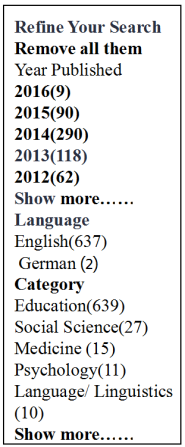
Search full text books for children
Displaying 1 to 100 of 639 titles for children where Category is Education

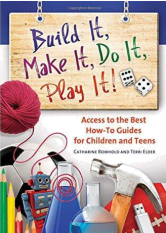 Build it ,Make it ,Play it ! Guides for Children and Teens Bomhold Catharine ;Elder Terri,2004 l ABC-CLIO Series: Children’s and Young Adult Literature Reference  Available AvailableFor busy librarians and educators ,finding instructions for projects ,activities ,sports ,and games that children and teens will find interesting is a constant challenge, This guide is a time-saving,one-stop…. Read this book l View details l Add to Collection |
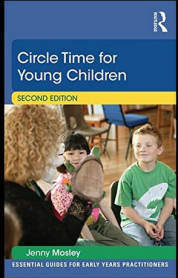 Circle Time for Young Children Mosley Jenny,2014 l Taylor and Francis Series: Essential Guides for Early Years Practitioners  Available AvailableJenny Mosley’s quality circle time model involves setting up an on-going, timetable process Of circle-meeting for adults and children ,As a basis for teaching relationship skills, building up self-esteem….. Read this book l View details l Add to Collection |
 Connecting Animals and children in Early Childhood Selly Patty Born,2014 l Redleaf Press  Available AvailableUnderstand the value of connecting animals and children .From familys pets and wild animals to toys ,stuffed animal ,and media images ,animals are a central part of every child’s world .This book examines…. Read this book l View details l Add to Collection |
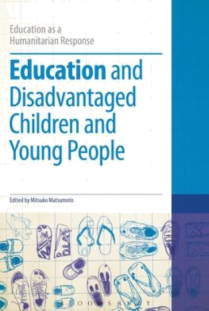 Education and Disadvantaged Children and Young People Matsumoto Mitsuko; Brool Colin,2013 l Bloomsbury Publishiing Series: Education as a Humanitarian Response  Available AvailableDo street children go ti school ,and if not ,why not? What kind of education can be ‘meaningful’ to young people affected by conflict? The contributors explore groups of children and young people who have…. Read this book l View details l Add to Collection |
Children with School problme:A Physkian’s Manual
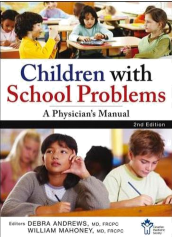 The children paediatric Society; Andrews Debra;Mahoney WilliamJ,2012 I wiley Available The physician’s guide to diagnosing and treating learning disabilities in children.1 to 10 Canadians have a learning disability,and doctors must be able to idcntify,diagnose,trear,and manage children… Read this book I view details I Add to Collection |
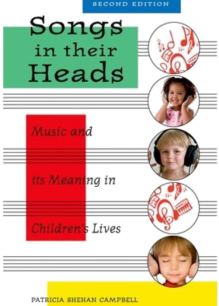 Songs in Their Heads:Music and Its Meaning In Children’s Lives Campbell Patricia Shehan,1989 I Oxford University Press Available This book explores the intrest and needs of children in their expressed thounts and actual “musicking”behaviours, This text examines the songs they sing,the ryhthms… Read this book I view details I Add to Collection |
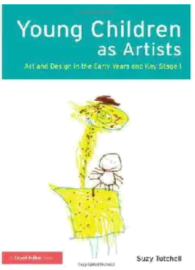 Young Children as Artists:Art and Design in the Earty Years and Kay Stage 1 Tutchell Suzy 2014 I Taylor Francis Available From the monment a child is born,they intctract with the world,looking at colours,feeding texrures;constructing mental and physical images of what they see and experience.Within all early years… Read this book I view details I Add to Collection |
 Big Ideas for Littles Kids:TEAching Philosophy Through Children’s Liferature Wartnberg Thomas E.2014 I Rowman&Littlefield Publishers Available Big Ideas for Little Kids includes everything a teacher,or a college student needs to teach philosophy to elementary school children from picture books.Written in a clear and accessible style… Read this book I view details I Add to Collection |
1. Suppose you are doing research on children’s relationship skills,you may want to read______.
| A.Circle Time for Young Children |
| B.Children with School Problems:A Phsysician’s Manual |
| C.Education and Disaddvantaged Children and Young People |
| D.Build It,Make It,Do It,Play It!Guides for Children and Teens |
| A.Connecting Animals and Children in Early Childhood. |
| B.Songs in Their Heads:Music and Its Meaning in children’sLives. |
| C.Big Ideas for Little Kids: Teaching Philosophy Through children’s Literature. |
| D.Young Children as Artists:Art and Design in the Early Years and Key Stage 1. |
| A.9. | B.90. | C.118. | D.290. |
| A.educators | B.librarians | C.doctors | D.artists |
Ceely’s near miss made the news because she blamed it on her GPS (导航仪). She had never driven the route before. It was dark and raining heavily. Ceely was relying on her GPS, but it made no mention of the crossing. “I put my complete trust in the device and it led me right into the path of a speeding train,” she told the BBC.
Who is to blame here? Rick Stevenson, who tells Ceely’s story in his book When Machines Fail Us, points the finger at the limitations of technology. We put our faith in digital devices, he says, but our digital helpers are too often not up to the job. They are filled with small problems. And it’s not just GPS devices: Stevenson takes us on a tour of digital disasters involving everything from mobile phones to wireless keyboards.
The problem with his argument in the book is that it’s not clear why he only focuses on digital technology, while there may be a number of other possible causes. A map-maker might have left the crossing off a paper map. Maybe we should blame Ceely for not paying attention. Perhaps the railway authorities are at fault for poor singalling system. Or maybe someone has studied the relative dangers and worked out that there really is something specific wrong with the GPS equipment. But Stevenson doesn’t say.
It’s a problem that runs through the book. In a section on cars, Stevenson gives an account of the advanced techniques that criminals use to defeat computer-based locking systems for cars. He offers two independent sets of figures on car theft; both show a small rise in some parts of the country. He says that once again not all new locks have proved reliable. Perhaps, but maybe it’s also due to the shortage of policemen on the streets. Or changing social circumstances. Or some combination of these factors.
The game between humans and their smart devices is amusing and complex. It is shaped by economics and psychology and the cultures we live in. Somewhere in the mix of those forces there may be a way for a wiser use of technology.
If there is such a way, it should involve more than just an awareness of the shortcomings of our machines. After all, we have lived with them for thousands of years. They have probably been fooling us for just as long.
1. What did Paula Ceely think was the cause of her accident?
| A.She was not familiar with the road. |
| B.It was dark and raining heavily then. |
| C.The railway workers failed to give the signal. |
| D.Her GPS device didn’t tell her about the crossing. |
| A.close hit | B.heavy loss |
| C.narrow escape | D.big mistake |
| A.Modern technology is what we can’t live without. |
| B.Digital technology often falls short of our expectation. |
| C.Digital devices are more reliable than they used to be. |
| D.GPS error is not the only cause for Ceely’s accident. |
| A.one-sided | B.reasonable |
| C.puzzling | D.well-based |
| A.The major causes of traffic accidents and car thefts. |
| B.The relationship between human and technology. |
| C.The shortcomings of digital devices we use. |
| D.The human unawareness of technical problems. |
Any huge task seems easier when reduced to baby steps. If you wished to climb a 12,000-foot mountain, and could do it a day at a time, you would only have to climb 33 feet daily to reach the top in a year. If you want to take a really nice trip in 10 years for a special occasion, to collect the $15,000 cost, you have to save $3.93 a day. If you drop that into a piggy bank and then once a year put $1,434 in a savings account at 1% interest rate after-tax, you will have your trip money.
When I was a child, my parents gave me a piggy bank to teach me that, if I wanted something, I should save money to buy it. We associate piggy banks with children, but in many countries, the little containers are also popular with adults. Europeans see a piggy bank as a sign of good fortune and wealth. Around the world, many believe a gift of a piggy bank on New Year’s Day brings good luck and financial success. Ah, but you have to put something in it.
Why is a pig used as a symbol of saving? Why not an elephant bank, which is bigger and holds more coins? In the Middle Ages, before modern banking and credit instruments, people saved money at home, a few coins at a time dropped into a jar or dish. Potters(制陶工) made these inexpensive containers from an orange-colored clay(黏土) called “pygg,” and folks saved coins in pygg jars.The Middle English word for pig was “pigge”. While the Saxons pronounced pygg, referring to the clay, as “pug”, eventually the two words changed into the same pronunciation, sounding the “i” as in pig or piggy. As the word became less associated with the orange clay and more with the animal, a clever potter fashioned a pygg jar in the shape of a pig, delighting children and adults. The piggy bank was born.
Originally you had to break the bank to get to the money, bringing in a sense of seriousness into savings. While piggy banks teach children the wisdom of saving, adults often need to relearn childhood lessons. Think about the things in life that require large amounts of money--- college education, weddings, cars, medical care, starting a business, buying a home, and fun stuff like great trips. So when you have money, take off the top 10%, put it aside, save and invest wisely.
1. What is the piggy bank strategy?
| A.Paying 1% income tax at a time. |
| B.Setting a goal before making a travel plan. |
| C.Aiming high even when doing small things. |
| D.Putting aside a little money regularly for future use. |
| A.To delight him with the latest fashion. |
| B.To encourage him to climb mountains. |
| C.To help him form the habit of saving. |
| D.To teach him English pronunciation. |
| A.Money | B.Gifts |
| C.Financial success | D.Good luck |
| A.a potter’s instrument | B.a cheap clay container |
| C.an animal-shaped dish | D.a pig-like toy for children |
| A.the seriousness of educating children |
| B.the enjoyment of taking a great trip |
| C.the importance of managing money |
| D.the difficulty of starting a business |
10 . Here is some must-know information from a handbook on how people behave in doing business in some countries.
In Brazil
Brazilians are warm and friendly. They often stand close when talking and it is common for them to touch the person on the shoulder. People often greet each other (particularly women) with light cheek kisses. Schedules tend to be flexible, with business meetings sometimes starting later than planned. But to be safe, be on time. Meals can stretch for hours — there’s no such thing as rushing a meal in Brazil. Lunches also can start in the mid to late afternoon. Brazilians are social, preferring face-to-face communication over mails or phone calls.
In Singapore
Singaporeans shake hands when they meet and often also greet each other with a small, polite bow. Business cards should be offered and received with two hands. Arriving late is considered disrespectful. So be on time. Efficiency(效率) is the goal, so meetings and dealings often are fast-paced. Singaporeans are direct in their discussions, even when the subject is about money. Rank is important and authority is respected. This determines both people interact in meetings. For example, people avoid disagreeing outright with someone with a higher rank.
In the United Arab Emirates
In the UAE, status is important, so the most senior or oldest should be greeted first with their titles. The handshake seems to be longer than elsewhere. So, do not pull away the handshake. Women should cover themselves when it comes to dress. Men also tend to be covered from neck to elbows(肘部) and down to the knees. People do not avoid entertaining in their homes, but they also hold business meals at restaurants. Touching or passing food or eating with your left hand is to be avoided. When meetings are one-to-one, if your host offers you coffee, you should refuse. It might seem odd, but it is a cultural tradition. Coffee should only be accepted if it is always set out or presented.
In Switzerland
The Swiss tend to be formal and address each other by last name. They also are respectful of private lives. You should be careful not to ask about personal topics. Punctuality (守时) is vital, something that comes from a deep respect for others’ time. Arrive at any meeting or event a few minutes early to be safe. They also have clear structure in their companies. Higher-ups make the final decisions, even if others might disagree. Neat, clean dress is expected. The Swiss follow formal table manners. They also keep their hands visible at the table and their elbows off the table. It is polite to finish the food on your plate.
1. The passage is mainly about _____________.| A.communication types |
| B.the workplace atmosphere |
| C.customs and social manners |
| D.living conditions and standards |
| A.They put efficiency in the first place. |
| B.They dislike face-to-face communication. |
| C.They want to finish meetings as quickly as possible. |
| D.They are supposed to obey the person of a higher rank. |
| A.When greeting seniors. |
| B.When meeting the host alone. |
| C.When attending a presentation. |
| D.When dining with business partners. |
| A.In Brazil. | B.In Singapore. |
| C.In the United Arab Emirate. | D.In Switzerland. |



